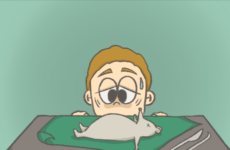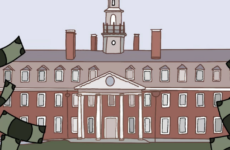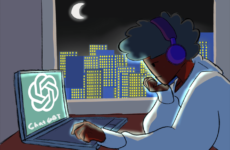Growing up in Colorado as a nerdy violinist, I was used to being the only black girl—and often, the only black person in any given room. As a result, I learned how to walk through the world as the exception to the rule. I learned how to answer people’s awkward questions and compliments about my speech patterns and interests. I learned how to ignore parents who glared and those whose eyes lit up with surprise when they saw me sitting next to their son or daughter during a concert. I learned how to say no when someone asked to touch my hair without blurting out that it felt like I was being petted like a dog. And although most people I interacted with had the best of intentions, I still felt like a curiosity, an animal in the zoo that had somehow broken out of its cage and learned to walk on its hind legs.
So, I looked for diversity when applying to boarding schools. I wanted to surround myself with people who were open-minded, people who weren’t surprised about my interests, despite my race—and most of all, people who looked like me. I sought representation. I thought that Choate, a place with over 30% students of color with a variety of interests would allow me to explore without feeling like an anomaly. Although I interacted with people from many different backgrounds in each of my classes and extracurriculars, I still often found myself being one of the few black girls in the room. For a long time, I wondered: what gives?
Choate, like many communities, is a microcosm of our greater society. And in a number of fields, representation of people of color and women is severely lacking. In the world of classical music, black and Latino people combined make up less than four percent of orchestras across the nation. Only one African-American female senator has been in Congress. Less than ten percent of minority women are employed scientists and engineers. Although perhaps less stratified, these disparities trickle down into Choate classes and extracurricular activities: for example, more boys take computer and political science classes than girls; as a freshman, I was one of two African-Americans in the symphony orchestra.
I do not believe Choate administration and faculty are actively denying underrepresented groups from taking part in certain disciplines or activities; these divisions stem from systemic issues. For example, fewer black families, chiefly ones of lower socioeconomic status, emphasize learning a classical instrument than families of Asian descent, so the audition pool is bound to include as many black musicians. However, many students are reluctant to attend certain club meetings or take particular classes because they feel uncomfortable venturing into new territory for fear of being voiceless or alone. I believe Choate can do more to encourage students—especially freshman and other new students—to break away from confining stereotypes and push themselves to pursue interests in subjects or groups where they may feel less welcome. Furthermore, Choate should create initiatives that explicitly invite a diversity of students to participate in underrepresented fields. Students have already begun the push with clubs like Girl Code, and now the faculty and administration must do the same.
The documentary, “who cries for the black girl” created by Abigail Bereola, featuring five back women at Amherst College sums it up best: “As a black woman, my race is sexualized and my sex is racialized.” The intersectionality of issues of representation must be addressed. We must examine why the disparity of students of color, queer students, non-binary students, and women exists in certain disciplines at Choate. And we must identify ways in which we can promote inclusivity for those students who want to feel like the standard, not the exception.




